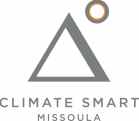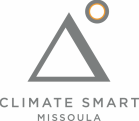This page is structured to help you navigate and learn about climate-related stress. We provide tips on how to manage climate stress, information about how climate change affects mental health, and additional resources to learn more.
|
We know that the climate emergency is affecting our mental health.
A few favorite resources:
|
Understanding the Emotional Impact of the Climate Crisis
In a world increasingly shaped by climate change, the toll on mental health is undeniable. Today, over half of American adults report that climate change is impacting their mental health. Many of us feel distress, hopelessness, anxiety, and grief as we confront the daunting realities of a planet in peril. It's normal to experience these feelings!
Amidst these challenges, it's crucial to recognize that we're not as powerless as we may feel in mitigating the climate crisis and in building resiliency.
Amidst these challenges, it's crucial to recognize that we're not as powerless as we may feel in mitigating the climate crisis and in building resiliency.
Here are some ideas about how to manage climate-related distress:
|
1. Connect with others You're not alone. Focus on your personal relationships by spending time with people you enjoy. Talk to your loved ones, seek out new social connections, share stories, and lean on your social supports. |
2. Practice relaxation techniques This might include taking long, slow deep breaths with your eyes closed, doing a mental body scan, resting, visualizing a peaceful place, or other mindfulness activities. |
3. Exercise (for those who are able) Eat, hydrate, exercise, and get rest on a regular basis; taking care of your body reduces the negative effects of stress. Even a 10-minute walk in your neighborhood can have positive effects. |
|
4. Go outside (as long as it is not dangerously smoky) Visit your neighborhood park, work in a garden, sit under a tree, or lay in the grass. Research shows that nature connectedness increases emotional well-being. |
5. Find activities that you enjoy Allocate time for hobbies, like creating art, crafting, hiking, reading, watching TV/movies, baking, gardening, music, etc. Spending time on things that you enjoy will boost your mood! |
6. Get involved in climate action Engagement with issues that matter to us helps promote feelings of efficacy, empowerment, connectedness, and pride. Volunteer with community organizations that promote solutions to causes you’re interested in. For more ideas, check out our Get Involved page. |
|
7. Buy less stuff Reducing our consumption not only decreases fossil fuels, it also helps us focus more on the things that matter most to us. For people who are able to meet their basic needs, reducing additional consumption can increase happiness and well-being. |
8. Grow our urban forest Plant trees and support tree-planting and care throughout our community. Studies show that greener neighborhoods decrease crime and violence, reduce stress, improve cognitive function, and increase feelings of well-being. |
9. Avoid maladaptive coping mechanisms Try to avoid excessive alcohol, tobacco, or other drugs to manage emotions. Substances can often make things harder in the long-run and are not a recommended way to cope with distress. |
|
10. Talk about your mental health Talking about it can reduce the stigma around depression, anxiety disorders, and other mental health problems. Additionally, sharing your mental health struggles with others can alleviate symptom severity and help you to find ways to feel better. |
11. Identify a time when you overcame adversity Aim to learn, grow, or find new meaning in your life. Revisit that situation in your mind when you’re struggling or feeling down, and remember you can apply these lessons to increase personal and community well-being in the face of climate change. |
12. Consider ways to build personal resiliency around heat, drought, and wildfire smoke. Understanding steps we can take to protect our health gives us a sense of agency and combats despair. Check out these resources: Heat // Smoke & Wildfires // Shade |
|
If you feel like your distress is impairing your daily functioning, or persists at a high level for multiple weeks, consider reaching out to therapists from the climate-aware therapist directory to find one in your area: Climate-Aware Online Therapist Directory | Mental Health Therapist Directory (climatepsychology.us). Or if you already have a therapist, here's an interesting article about how to bring up the conversation: Want to talk to a therapist about climate change? Here are four things to ask.
Additionally, the Good Grief network has created a climate-related virtual peer support program for individuals struggling with distress about climate change: Home - Good Grief Network. Other resources for immediate help:
|
Direct effects of climate change on mental health are clear when looking at some of the specific changes in the environment. Explore how each environmental event affects mental health and how to cope by clicking on the tabs below:
HEAT
Rising temperatures are known to cause sleep disruption, fatigue, and stress by way of temperature-sensitive physiological mechanisms. Studies around the globe have found that the frequency and severity of mental health disorders increase as temperatures increase, such as depression and anxiety. Some researchers estimate that the number of people with mental illness is estimated to increase by 6-11% during a heat wave. Aggression and conflict also appear consistently associated with heat, which could impact wellbeing. Additionally, extreme heat raises our brains' levels of cortisol, the so-called "stress hormone," leading to potential increases in irritability, aggression, violence, anxiety, and suicide. High temperatures also limit physical activity and time spent outdoors, both of which are important coping mechanisms for some. Certain medications used to treat mental illness impair the body’s ability to regulate temperature, creating further risk for those with existing mental health problems.
Additional resources for learning about the impact of heat and how to cope:
Additional resources for learning about the impact of heat and how to cope:
EXTREME WEATHER EVENTS & natural disasters (including wildfires)
Extreme weather events can force people from their homes and forever change the landscapes to which we are connected. Such events may lead to chronic stress, including post-traumatic stress disorder (PTSD), as well as depression, anxiety, substance abuse, suicidal thoughts, and increases in domestic violence. Additionally, fine particulate matter present in wildfire smoke also causes brain inflammation, the effects of which are not yet clear.
Additional resources for learning about the impact of wildfires and how to cope:
Have you experienced trauma following a natural disaster? Here’s how to recognize signs and what to do about them:
Additional resources for learning about the impact of wildfires and how to cope:
- The Impact of Wildfires on Mental Health: A Scoping Review
- An article from Psychiatric Times on mental health and wildfires.
- Here is a study about how wildfires affect mental health.
- Advice from the American Psychological Association on how to recover from wildfires.
- More information about how to cope with wildfires and smoke.
Have you experienced trauma following a natural disaster? Here’s how to recognize signs and what to do about them:
Air pollution (Including Wildfire smoke)
Air pollution has been found to affect the brain directly by influencing neurotransmitter functions that play a large role in mental well-being. Furthermore, physical impairments that are consistently associated with air pollution, like cardiovascular disease, diabetes, asthma, are likely to increase the prevalence of depression.
Additional Resources:
Additional Resources:
DROUGHT
Drought geatly disrupts the lives of farmers, ranchers, and the communities in which they live. Increased rates of worry, chronic stress, domestic violence, substance abuse, and suicide have been found among communities affected by prolonged drought.
Additional information:
Additional information:
Forced migration
Due to wildfires, drought, famine, coastal flooding, and hurricanes can devastate or destroy entire communities. Climate changed-induced disasters are expected to displace more than 200 million people worldwide by 2050, leading to potential conflicts over resources wherever climate refugees resettle, in addition to psychological distress over drastic changes to an individual's home and sense of community.
Additional resource for information about forced migration:
Additional resource for information about forced migration:
Climate change as aN ONGOING AND UNCERTAIN threat
Increasing awareness and media coverage of the effects of climate change can lead to feelings of anxiety, stress, hopelessness, despair, loss of control, sadness, grief, and guilt. Many individuals who are not directly exposed to natural disasters or erratic weather can feel overwhelmed about the current effects of climate change on other vulnerable groups, the future of the world, loss of faith in governing powers, among other things.
Who Is Most At Risk? |
A Catalyst for Personal and Community Growth |
|
Anyone can suffer from mental and emotional health problems, which strike regardless of background, especially in times of crisis or strife.
However, some circumstances can put particular groups at greater risk. children
Children are naturally resilient, but they also are particularly susceptible to distress and anxiety over traumatic events and climate-induced upheavals. Chronic stress can put children at risk of mental health issues later in life. Existing risk factors and protective factors play a role as well. Helping Children Through Environmental Changes: Coping After Trauma and Disaster: Mental Health Tips and Resources from APA | Northern California Psychiatric Society (ncps.org) women, pregnant women, and postpartum mothers
Women are more likely to experience post-traumatic stress disorder (PTSD), mental health problems, and feelings of vulnerability or anxiety after climate-related disasters. Impacts to their mental health often affect the health of their children. The effects of climate change also can increase levels of domestic violence against women. seniors
Seniors typically have higher rates of untreated depression, more physical ailments, and a greater likelihood of social isolation. All of these factors can increase their susceptibility to the negative mental health impacts of climate change. native americans
Native Americans are more likely to struggle with climate change on a number of fronts. High rates of poverty put indigenous peoples at greater risk during extreme weather events, and historical trauma can make additional, climate-induced traumas more difficult to bear. The alteration of culturally and spiritually significant environments also can lead to grief, despair, and depression. those with prior or existing mental health struggles or trauma
Those with prior or existing mental health struggles or trauma may experience worsened symptoms in the face of climate change. In addition, many medications used to treat mental health disorders interfere with the body's ability to regulate heat, leading to increased potential for heat stroke and hyperthermia. low income population
People who are poor are less likely to have the resources to cope with climate change. They may not have access to health care, and they may be unable to take measures to make their homes cooler or safer during extreme events. Those who are homeless also lack protection from the elements, including heat and wildfire smoke. All of these factors increase susceptibility to anxiety, worry, chronic stress, and depression. those with heart and lung pre-existing conditions
Climate change is bringing increased wildfire smoke, hotter days, and a longer allergy season. All of these can affect people with asthma, cardiovascular problems, and even allergies, causing them to feel fearful, worried, stressed, isolated, and irritable. immigrants and refugees
Immigrants and refugees, in particular refugees from drought, sea-level rise, and hurricanes like New Orleans' Katrina, face the loss of loved ones, difficult financial circumstances, strained relationships with their new communities, and trouble adjusting to a new home. Such obstacles may lead to depression, anxiety, sadness, hopelessness, and domestic violence. |
In spite of its negative consequences, climate change presents a unique opportunity to promote growth and well-being above and beyond current levels. Rather than attempting to get "back to" pre-climate change levels of community health (which actually weren't very healthy for many of us) the threat of climate change provides an opportunity to adapt in ways that increase health, happiness, and resiliency for everyone.
Climate change can help us grow by:
|
Climate Change and Mental Health: Additional Resources
|










